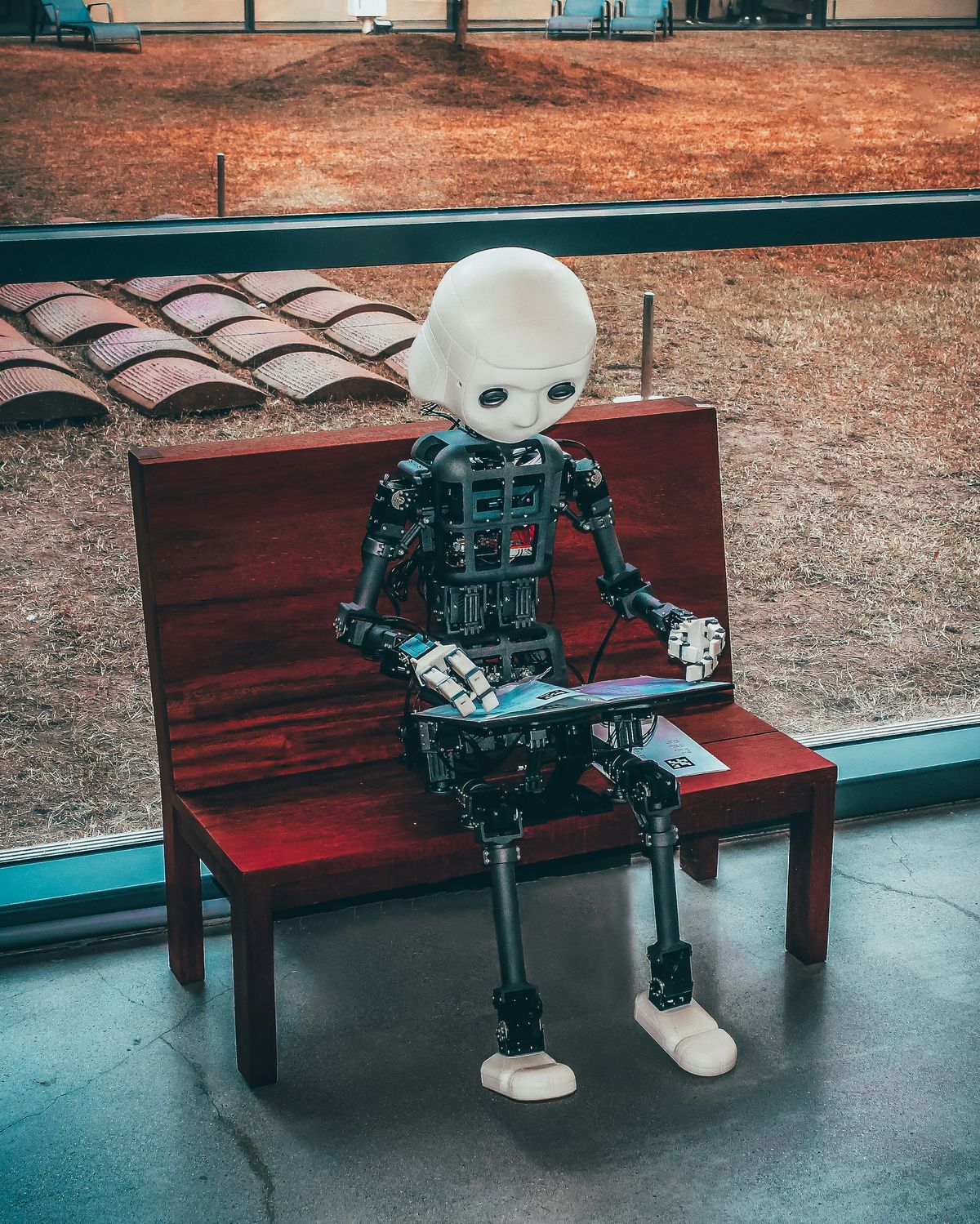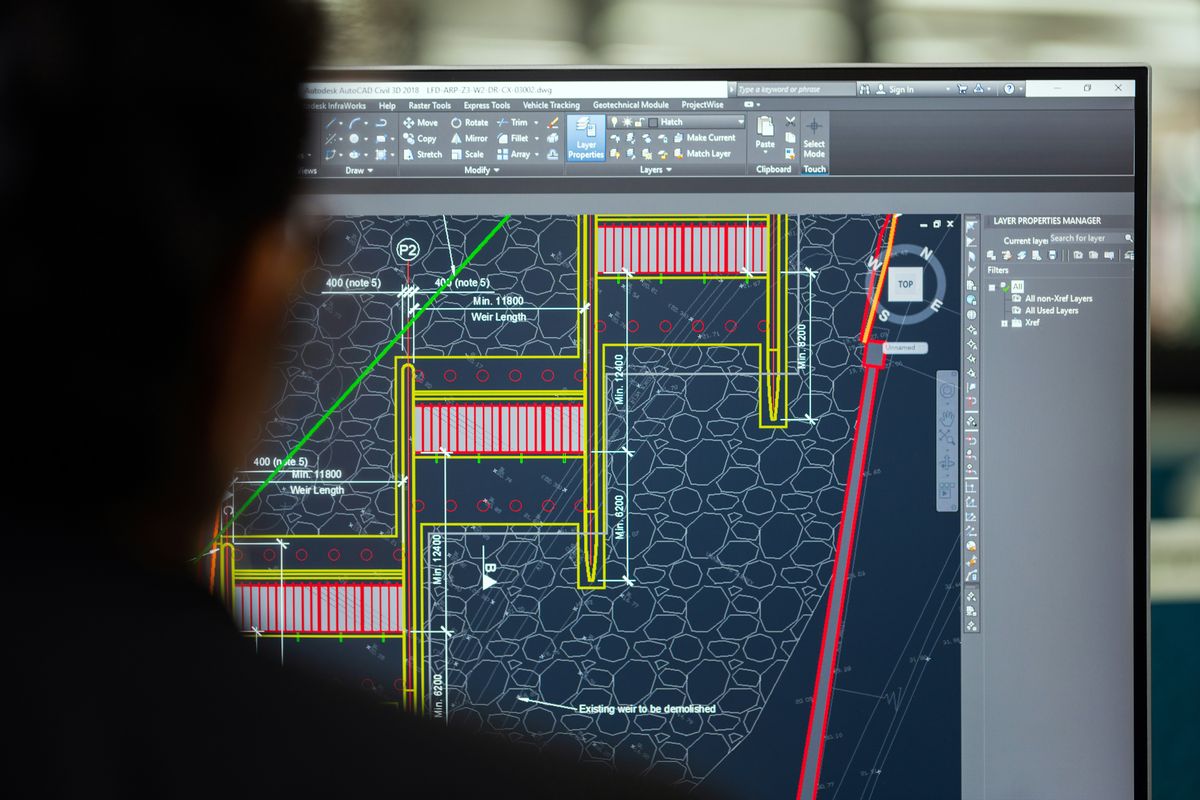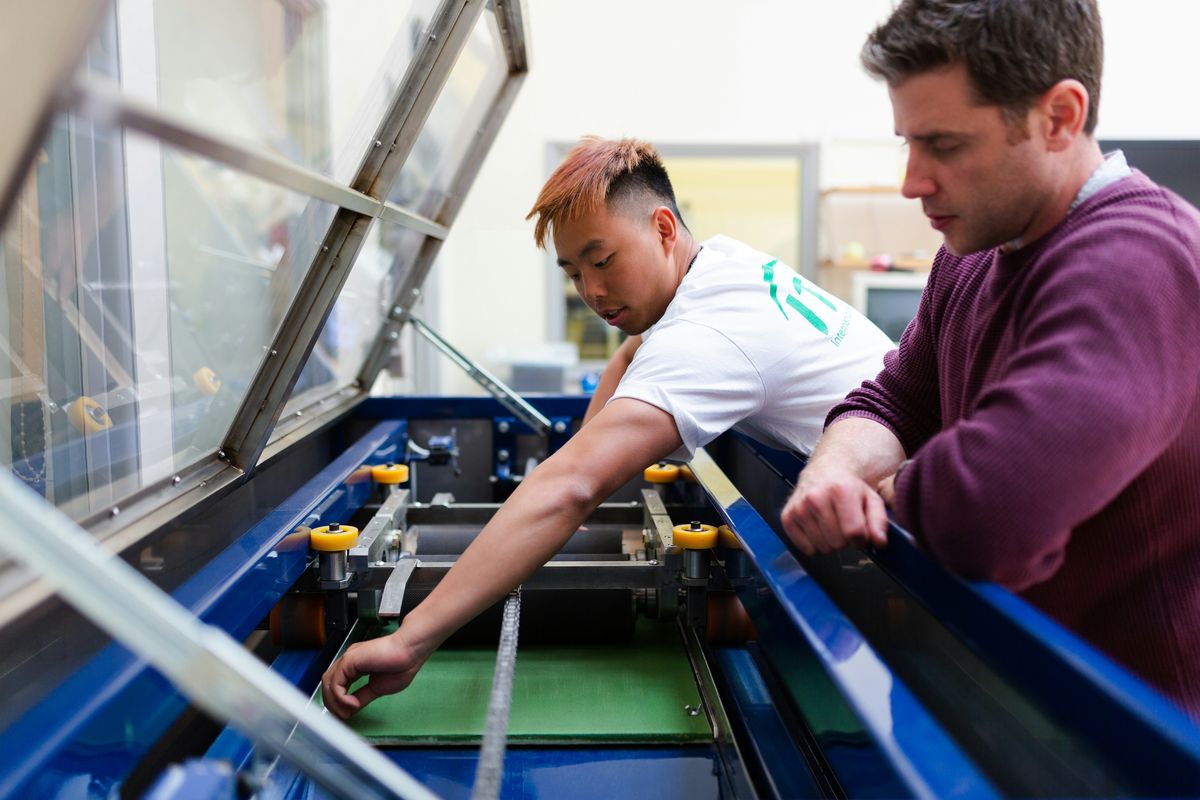Exploring the Future of AI Software Generators
Artificial Intelligence (AI) is no longer a distant concept. It's here, transforming industries and reshaping the way we live and work.
One area where AI is making significant strides is in software generation. AI software generators are revolutionizing the field, automating tasks that once required human intervention.

These tools leverage machine learning and natural language processing to create content, write code, and even design user interfaces. They're not just tools of convenience. They're catalysts for innovation, driving efficiency and productivity across sectors.
But what exactly are AI software generators? How do they work? And more importantly, what does the future hold for these transformative tools?
In this article, we'll delve into the world of AI software generators. We'll explore their origins, their current state, and the potential they hold for the future. We'll also examine their impact on various industries, from digital marketing to software development.
We'll discuss the benefits of automated content creation, as well as the challenges and ethical considerations that come with it. We'll look at how AI is enhancing creativity and personalization, and the importance of human oversight in AI systems.
We'll also explore the integration of AI software generators with emerging technologies like the Internet of Things (IoT) and blockchain. And we'll consider the potential disruptions these tools could cause in job markets.
Whether you're a tech enthusiast, a software developer, an AI researcher, or just curious about the impact of AI on our world, this article is for you. It's a comprehensive guide to understanding and exploring the future of AI software generators.
So, let's embark on this journey together. Let's delve into the fascinating world of AI software generators and explore the future they're shaping.
The Rise of AI Software Generators #
AI software generators have rapidly emerged as powerful tools within the tech industry. They are shifting paradigms in software creation and content generation. These advanced systems automate complex processes, enabling efficiencies never seen before.
The driving factors behind this rise are numerous. First, there's the continuous refinement of AI algorithms. These advancements improve the precision and speed at which AI systems operate.
Second, there's the exponential growth of data available for training these systems. More data means better, more accurate AI solutions.
Moreover, industries are experiencing pressure to innovate faster. They need to offer more competitive digital products. AI generators are an excellent answer to this demand.
AI software generators are changing how industries operate. Here are some key impacts:
- Automated content creation is becoming commonplace.
- Companies reduce development costs and time.
- Digital transformation is accelerated through AI-driven innovations.

Organizations across various sectors are adopting AI-driven approaches. Businesses are thriving by leveraging these technologies for superior outcomes. This trend is only set to grow as technology advances even further.
Understanding AI Software Generators #
AI software generators are complex systems. They combine algorithms to produce content, design interfaces, and write code autonomously. They function by learning from large datasets and recognizing patterns.
Machine learning plays a critical role. The system improves over time as it processes more information, becoming increasingly proficient.
Natural language processing is another crucial component. It enables AI to comprehend and generate human-like text. This capability is vital for tasks like writing articles or creating customer service scripts.

Many misconceptions exist about AI software generators. Some believe they're a standalone solution. However, they often require integration with existing tools and frameworks.
These systems are not intended to replace humans. Instead, they augment human efforts. By handling repetitive tasks, they allow humans to focus on more strategic activities.
Ultimately, understanding AI software generators involves recognizing their potential and limitations. With proper implementation, they open doors to innovative possibilities.
The Evolution of AI in Software Development #
The journey of AI in software development has been remarkable. It began with simple automation tools. Today, we're witnessing AI systems capable of producing complex applications independently.
The evolution has been driven by advancements in machine learning algorithms. These have become sophisticated enough to handle intricate software design tasks.
Initially, AI's role was limited. It assisted with code debugging and error correction. But, its capabilities grew beyond these simple tasks.

The introduction of neural networks marked a major milestone. These systems mimic human brain functions, allowing AI to perform complex analysis and decision-making tasks.
The landscape of software development is changing rapidly. AI tools are becoming standard in many development environments. They expedite the development process and improve code quality.
Developers can now focus on creativity and innovation. AI handles repetitive coding tasks, reducing errors and increasing productivity. The future of AI in software development seems bright, filled with opportunities for groundbreaking innovation.
How AI Software Generators Work #
AI software generators are sophisticated technologies rooted in advanced computational theories. They operate by integrating multiple AI methodologies. These methods enable the automation of content creation, code writing, and more.
The backbone of these systems is machine learning. Machine learning involves training AI models using extensive datasets. As these models learn, they improve their performance over time.
Another crucial element is natural language processing (NLP). NLP allows AI to understand and generate human language. This ability is essential for tasks like writing and customer interactions.
For AI software generators to function, they must process enormous amounts of data. This data helps the AI recognize patterns and make informed decisions. The system's accuracy largely depends on the quality and quantity of data fed into it.
Key components of AI software generators include:
- Algorithms that process and interpret data.
- Models trained to perform specific tasks.
- Feedback loops for continual improvement.

These systems are designed with flexibility in mind. They are adaptable, learning new patterns as conditions change. This adaptability makes them powerful tools for a dynamic environment.
Machine Learning and Natural Language Processing #
Machine learning and natural language processing are at the core of AI generators. They empower machines to learn and adapt. This dual capability revolutionizes software creation and automated content generation.
Machine learning focuses on improving systems through experience. It involves teaching AI models to recognize patterns and relationships. These models learn by analyzing large volumes of data.
The emphasis is on creating systems that improve over time. As they encounter more data, their predictions and outputs become more accurate. This is crucial for developing intelligent automation systems.

Natural language processing, on the other hand, deals with the interaction between computers and humans through language. It enables AI to process and generate text in a human-like manner.
NLP is essential for tasks that require understanding context, tone, and intent. Through NLP, AI systems craft content that is coherent and contextually relevant.
When combined, machine learning and NLP create powerful tools. These tools are capable of performing tasks that require both learning and linguistic abilities. This synergy is the essence of modern AI software generators.
The Role of Big Data in AI Software Generation #
Big Data plays a pivotal role in the functionality of AI software generators. Its vast volume and variety form the foundation upon which AI models are built. Proper data handling is integral for effective AI system performance.
The more data an AI model is exposed to, the better it performs. Data provides the needed inputs for machine learning models. These inputs enable models to learn and refine their operations.
Data is crucial for training, validation, and testing in AI processes. It acts as the raw material that powers learning algorithms. Patterns within data guide AI decisions and predictions.

AI systems utilize data to generate insights and automate processes. This improves accuracy and efficiency. It leads to better outcomes in content creation, software development, and many other applications.
Businesses leverage Big Data analytics to enhance AI capabilities. This helps in predicting user behavior and optimizing product offerings. It is an ongoing cycle of data-driven improvement and refinement.
The interplay between data and AI fosters innovation. The possibilities expand as AI models are exposed to diverse and extensive datasets. This potential continues to grow with advances in data acquisition and processing technologies.
Current Applications and Industry Use Cases #
AI software generators are making significant impacts across various sectors. Their capabilities transcend simple automation, providing intelligent solutions for complex challenges. Many industries benefit from the versatility of these generators.
In content creation, AI is revolutionizing how marketing materials are produced. It can generate text that resonates with target audiences. This allows businesses to engage more effectively with consumers.
Another field seeing substantial AI integration is software development. AI tools are now assisting developers in writing and refining code. This accelerates the development lifecycle and enhances product quality.
AI also plays a pivotal role in data-driven decision-making. Industries like finance and healthcare use AI to analyze data for strategic insights. This enables informed decisions that boost operational efficiency.
Key industry applications include:
- Automated content creation for blogs and websites.
- AI-driven software and application development.
- Data analysis and predictive modeling in various sectors.

AI's adaptability and learning capabilities ensure its uses continue to expand. As more sectors embrace AI, the potential for innovation grows. This promises a dynamic future for AI applications.
Content Creation and Digital Marketing #
In digital marketing, AI-driven content creation is a game-changer. It offers businesses the ability to produce personalized content at scale. This leads to more targeted and effective marketing strategies.
AI software can generate articles, social media posts, and email copy. These AI-generated materials maintain consistent branding and messaging. The speed and efficiency of AI allow marketers to focus on strategy rather than content production.
AI tools analyze consumer behavior and preferences. This data-driven approach informs the creation of content that appeals to specific audiences. It results in higher engagement rates and improved customer relationships.

AI's contribution extends to SEO by refining content for better search performance. It can adapt content to match current search trends, increasing visibility. This enhances the reach and impact of marketing campaigns.
The combination of AI and digital marketing empowers brands. It helps them to stay ahead in a competitive marketplace. As AI develops, its role in content creation will only become more vital.
Software Development and Code Generation #
AI is transforming software development by streamlining coding processes. Developers now use AI-driven tools to generate and debug code. This AI assistance leads to faster and more reliable software development.
AI can automate repetitive coding tasks, allowing developers to focus on complex problems. This improves productivity and reduces human error. AI's precision in code generation enhances overall software quality.
Through machine learning, AI tools adapt to developers' styles and preferences. This personalization leads to more intuitive and efficient development environments. It also facilitates collaboration within development teams.

AI's role in software extends to predictive maintenance and monitoring. It can foresee system failures and suggest preventative measures. This ensures higher system uptime and reliability for businesses.
The future of software development with AI holds even greater potential. As AI becomes more sophisticated, its applications will likely expand. This evolution promises to reshape the landscape of technology creation.
Benefits and Challenges of Automated Content Creation #
Automated content creation is revolutionizing how content is crafted and consumed. With AI, businesses produce content faster and at scale. This technology introduces benefits that surpass traditional methods.
However, challenges persist in adopting AI for content generation. These challenges include ethical issues and technical limitations. Organizations must navigate these carefully to maximize AI's potential.
As the technology matures, balance is necessary. Understanding both the benefits and limitations provides a holistic view. It enables more informed decisions in content strategy.
AI-driven content affects various sectors differently. What works for one industry might not suit another. It's vital to tailor AI solutions to specific industry needs.
Advantages of AI-Driven Content Generation #
AI-driven content generation offers a variety of benefits. Speed tops the list; AI can generate content at an unprecedented pace. This rapid production meets the high demand for fresh and engaging material.
The ability to personalize content is another advantage. AI tools analyze user data to create tailored messages. This personalized approach enhances user engagement and satisfaction.
Cost efficiency is a notable benefit as well. Automated tools reduce the need for large content teams. Companies can reallocate resources to other critical areas, boosting overall efficiency.
AI's consistency ensures branding remains uniform across all content. This uniformity is crucial for maintaining a cohesive brand identity. It fosters trust and recognition among audiences.

By embracing AI-driven content, organizations can stay ahead. The landscape of content creation continues to evolve. AI positions companies for success in this ever-changing environment.
Limitations and Ethical Considerations #
Despite its benefits, AI-driven content generation faces challenges. One major concern is the quality of generated content. AI may not always produce nuanced or creative work equivalent to human efforts.
Ethical considerations also come into play with AI content. Issues such as copyright and authenticity raise questions. Ensuring AI content adheres to legal and ethical standards is paramount.
Lack of human touch in AI-generated content can be a drawback. Empathy and emotional depth are areas where AI struggles. These are critical components for connecting with audiences on a deeper level.
The risk of misuse or reliance on AI for content must be addressed. Over-dependence could stifle human creativity and judgment. It's essential to integrate AI thoughtfully into content strategies.

Striking a balance between AI automation and human input is key. By recognizing limitations, businesses can mitigate risks. It leads to more robust and responsible use of AI in content creation.
The Future Landscape of AI Software Generators #
AI software generators are on the brink of a new era. Innovations are emerging at a rapid pace. These advancements are poised to reshape industries across the board.
The evolution of AI presents both exciting prospects and complex challenges. Understanding these dynamics is crucial for businesses. It prepares them for a future increasingly intertwined with AI technologies.
The next decade will likely bring profound changes. AI tools will become more sophisticated and versatile. They will integrate more seamlessly into various sectors, enhancing efficiency and innovation.
Here are key trends anticipated in the near future:
- Increased adoption of AI in creative fields like design and writing.
- Enhanced AI-driven analytics for better data interpretation and decision-making.
- Growth of AI in remote work settings, optimizing productivity.
- Development of AI tools specialized for niche markets and industries.
- Expansion of ethical frameworks to guide AI development.

Businesses that embrace these trends will gain a competitive edge. They will lead their industries in innovation and efficiency. Navigating the future landscape demands adaptability and foresight.
Predictions for the Next Decade #
The upcoming decade presents a promising horizon for AI software generators. They will continue to evolve, becoming more autonomous and intuitive. These tools will surpass current capabilities significantly.
AI software generators will transform how content is created and customized. They will offer unprecedented personalization options. This shift will cater to individual preferences, enhancing user satisfaction.
Scalability will be another focus area. Generators will adapt to handle bigger data loads effortlessly. This capability will benefit enterprises of all sizes and sectors.
AI will also likely integrate more deeply with smart city infrastructure. It will optimize urban planning and enhance resource management. This integration will foster sustainable and efficient cities worldwide.

The intersection of AI with technologies like augmented reality offers new opportunities. These combinations promise immersive experiences across various applications. Embracing these technologies will unlock novel possibilities.
Potential Disruptions in Job Markets #
AI software generators might alter job dynamics significantly. Automation could streamline tasks traditionally done by humans. While this boosts efficiency, it raises concerns about job displacement.
Certain roles, especially those involving routine tasks, may become obsolete. However, new opportunities will also emerge. These will focus on managing, developing, and improving AI systems.
The demand for skills in AI programming and management will surge. Professionals must adapt to these shifting needs. Continuous learning and skill development are essential for staying relevant.

Industries will need to redefine their workforce strategies. They must balance AI integration with human talent. This approach will harness the benefits of both, ensuring sustainability.
Navigating these disruptions requires foresight and preparation. Companies and workers must embrace change proactively. By doing so, they can capitalize on the opportunities AI presents.
Integrating AI Software Generators with Emerging Technologies #
The fusion of AI software generators with emerging technologies is shaping new horizons. This integration is not merely a trend; it represents a significant shift in technological paradigms.
As AI systems grow in sophistication, they pair well with technologies like IoT and blockchain. These synergies enhance capabilities and open up innovative applications.
Businesses can harness these integrations for unprecedented efficiency and innovation. They will benefit from streamlined operations and more insightful analytics.
Here are some ways AI is integrating with emerging technologies:
- Enhancing data collection and analysis through IoT devices.
- Strengthening security protocols with blockchain technology.
- Improving real-time decision-making processes.
- Automating and optimizing supply chains efficiently.
- Facilitating personalized and adaptive user experiences.

This convergence is setting the stage for a future dominated by smart, interconnected systems. These systems promise to improve lives and transform industries radically.
AI and the Internet of Things (IoT) #
The Internet of Things (IoT) is an area where AI shows immense promise. AI enhances IoT by adding intelligence to connected devices. This synergy powers smarter data-driven decisions.
IoT devices collect vast amounts of data across various environments. AI processes this data quickly, finding patterns and generating insights. This capability improves predictive maintenance and operational efficiency.
AI-driven IoT applications are visible in smart homes, healthcare, and manufacturing. They optimize energy use, monitor patient health, and streamline production processes. These applications represent only the tip of the iceberg.
The marriage of AI and IoT extends into environmental monitoring. AI analyzes data from sensors to provide insights into climate patterns. This information is invaluable for sustainability efforts and disaster response.

As more devices become interconnected, the demand for AI-driven IoT solutions will grow. These solutions hold the potential to create environments that are safer, more efficient, and user-friendly.
AI, Blockchain, and Cybersecurity #
Combining AI with blockchain technologies fortifies security measures. AI algorithms can detect anomalies and prevent fraudulent activities. This makes systems more resistant to cyber threats.
Blockchain, renowned for its decentralized and immutable ledger, ensures data integrity. When paired with AI, it can automate complex processes with security at the core. Together, they create robust solutions for data management and transactions.
In cybersecurity, AI acts as a watchdog, monitoring networks tirelessly. It predicts potential threats and neutralizes them in real-time. This proactive approach greatly reduces risks associated with cybercrime.
AI and blockchain are also pivotal in safeguarding personal data. With growing concerns about data privacy, their integration provides transparency and control. Users can trust these systems to handle sensitive information with care.

The collaboration between AI, blockchain, and cybersecurity is transformative. These technologies collectively nurture an environment where data is both accessible and secure. As threats evolve, this integrated approach will be more critical.
The Role of AI in Enhancing Creativity and Personalization #
AI is redefining creativity and personalization across various domains. From tailoring content to crafting art, AI-driven tools are expanding creative possibilities.
These technologies empower creators to push boundaries and explore new frontiers. They also enable businesses to deliver personalized experiences at unprecedented scales.
AI plays a crucial role in data analysis, uncovering consumer preferences and trends. This insight allows for more informed creative decisions and targeted content.
In the realm of personalization, AI focuses on understanding individual needs. It adapts content to resonate with personal tastes and habits, enhancing user engagement.
Here’s how AI fosters creativity and personalization:
- Generates unique artistic and musical pieces.
- Adapts marketing strategies to individual customer profiles.
- Crafts custom-fit experiences in entertainment platforms.
- Designs personalized learning modules for educational advancements.
- Refines user interfaces to match specific user preferences.

The combination of creativity and AI’s analytical prowess is producing customized experiences that captivate and engage.
Personalized Content at Scale #
Delivering personalized content at scale requires precision and agility, and AI excels in this domain. By analyzing vast datasets, AI systems craft content tailored to each user without compromising speed or quality.
AI tools assess user behavior, preferences, and interactions in real-time. This allows them to suggest relevant products, articles, or shows, enhancing engagement and user satisfaction.
Platforms like Netflix and Spotify leverage AI to personalize recommendations, creating a dynamic user experience. AI evaluates viewing habits or listening patterns to suggest similar or complementary content. This keeps users engaged and exploring new options.
Beyond entertainment, AI personalizes content in education and marketing. It designs learning modules that match individual learning speeds and styles. In marketing, it targets advertising to suit the interests and needs of different consumer segments.

This scalability in personalization means companies can reach wider audiences while maintaining individual engagement. It results in a more interactive and user-centric digital experience.
AI in Creative Industries: Music, Art, and Beyond #
AI's influence in the creative industries is profound. It acts as both a collaborator and tool, opening new dimensions of innovation in music, art, and beyond.
In music composition, AI algorithms can analyze patterns from a plethora of music genres. They experiment with melodies, harmonizing classical styles with modern beats. Musicians use these compositions as inspiration or as full-fledged pieces ready for refinement.
The art world sees AI creating visual wonders, from digital paintings to unique sculptures. AI mimics styles and techniques from historical greats while introducing fresh, unique forms. Artists now have avenues to explore ideas and structures previously unimaginable.
This creative symbiosis is even impacting literature. Natural language processing enables AI to assist in narrative development and creative writing. Authors gain a tool for idea generation and style experimentation, enhancing their workflow.

AI in creative industries is not merely an aid; it is an innovative partner. As tools become more sophisticated, the cultural landscape will see vast and exciting transformations, enriching the creative process and output across genres.
The Importance of Human-AI Collaboration #
Human-AI collaboration is crucial as we advance deeper into the digital era. AI can amplify human capabilities, but oversight and guidance are essential.
When humans and AI work together, results often surpass what either could achieve alone. Combining human intuition with AI’s analytical capacity leads to innovative solutions.
This collaborative model is evident across various fields. Industries ranging from healthcare to finance benefit from AI's precision and humans' contextual insight.
A successful partnership between humans and AI relies on understanding each other's strengths and limitations. Here are some key aspects of human-AI collaboration:
- Humans provide context and ethical judgment.
- AI offers pattern recognition and data processing speed.
- Jointly, they enhance creativity and problem-solving.
- Collaboration fosters transparency and accountability in automated systems.

In essence, AI handles tasks with precision, while humans ensure these actions align with broader goals and ethical standards.
Ensuring Human Oversight in AI Systems #
Human oversight in AI systems is necessary to maintain ethical standards and accountability. As AI systems become more autonomous, the need for monitoring intensifies.
Integrating human supervision ensures that AI systems make decisions aligned with societal norms and values. This oversight prevents unintended consequences or biases that may arise from purely algorithmic decisions.
For instance, in healthcare, AI is used for diagnostic predictions. Human professionals review AI insights to ensure correctness and ethical decision-making, bearing in mind the patient's holistic care.
Similarly, in autonomous vehicles, AI manages navigation and safety protocols. Yet, human intervention remains vital, especially in complex situations that require moral or nuanced decisions.

Establishing a framework for oversight helps mitigate risks and supports the responsible deployment of AI systems. This balance between machine decision-making and human control is pivotal for trustworthy AI integration.
The Future of Human-AI Teamwork #
The future of human-AI teamwork promises profound advancements across disciplines. As AI evolves, it will become a more intuitive partner in collaborative environments.
AI will not only respond to direct instructions but will also anticipate needs and offer proactive solutions. This shift will empower humans to address more complex and creative challenges.
In business, AI will enable deeper insights into market trends and consumer behaviors. Humans will interpret these insights with strategic thinking to drive innovation and success.
In educational fields, AI can personalize learning journeys, while educators focus on fostering critical thinking and interpersonal skills. This dual approach enriches the learning experience, making it more effective and inclusive.

As AI and humans grow more accustomed to working symbiotically, the boundaries of what we can achieve together will expand. Encouraging this teamwork will unlock new opportunities, fostering a future where human creativity and AI’s capabilities complement and enhance each other optimally.
Conclusion: Embracing the AI Revolution #
As we stand on the cusp of the AI revolution, it's crucial to recognize the transformative power of AI software generators. These tools are reshaping industries and redefining the boundaries of possibility. By automating tasks and enhancing content creation, AI is fostering innovation and efficiency across multiple domains.
The advances in AI development tools are creating opportunities for businesses large and small. From content generation to code development, AI is driving new levels of productivity and creativity. Yet, amidst these advancements, embracing AI responsibly is key. Ensuring ethical practices and human oversight remains at the forefront is essential for sustainable progress.

Looking ahead, the potential of AI software generators is immense. As technologies evolve, they promise to unlock even greater possibilities. By fostering collaboration between human creativity and machine intelligence, we stand to gain unprecedented insights and breakthroughs. The future beckons us to harness these technologies effectively and responsibly, ensuring they benefit society as a whole.
In this rapidly evolving landscape, staying informed and adaptable is crucial. The ability to leverage AI's full potential depends on our readiness to adapt and learn continuously. As we embrace the AI revolution, let us focus on building a future where innovation drives positive change, enhancing lives and creating new opportunities for all.
